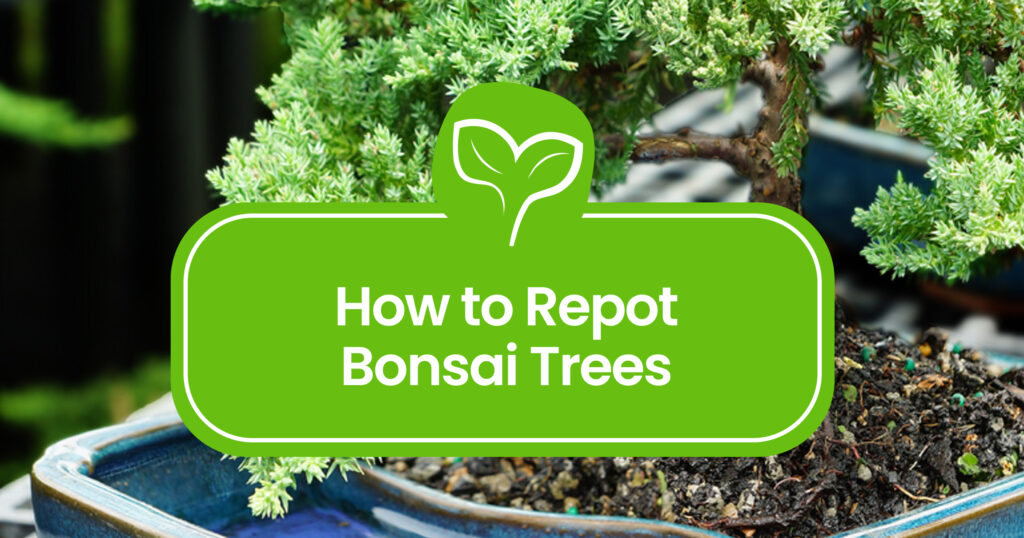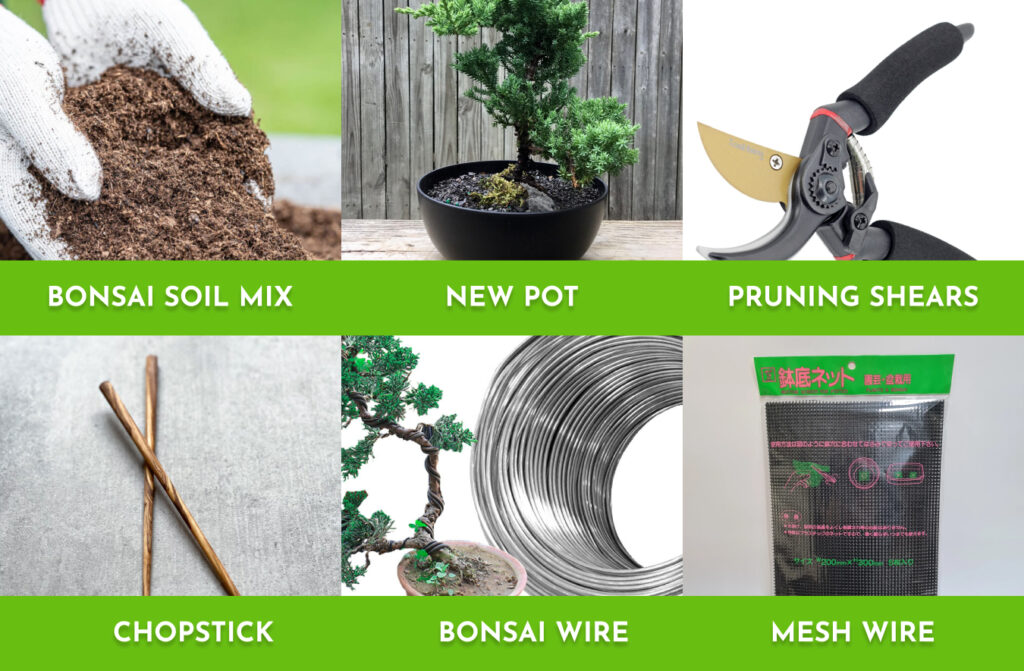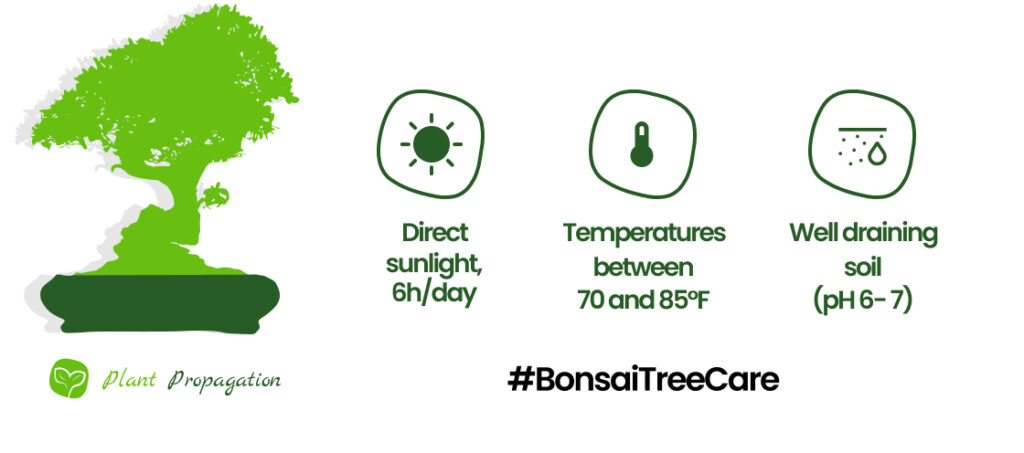
Bonsai trees are like the zen masters of the plant world. They’re serene, timeless, and oh-so-cool. But just like any seasoned guru, they sometimes need a change of scenery. That’s where repotting comes in. In this guide, we’ll learn how to repot bonsai trees. Let’s dive in!
When and How Often to Repot a Bonsai Tree?
Think of repotting as a spa day for your bonsai. It’s not something you want to do every week, but it’s essential for their overall well-being. Generally, you should aim to repot your bonsai every 2-5 years. However, this timeline can vary depending on the species and growth rate.
Spring is prime time for most bonsai repotting, just as they’re waking up from their winter slumber. It’s also a time when the roots are starting to grow, making it easier for your tree to recover from the process. If you have indoor bonsai trees, summer is also a good time to do the repotting.
Choosing the right soil
Choosing the right soil mix is crucial for your little green buddy’s happiness. You’ll want a mix that’s well-draining but still holds enough moisture to keep your bonsai hydrated. A typical mix might include baked clay (akadama), pumice, and lava rock. You can even make your own mix if you’re feeling adventurous. Just remember, aeration and moisture retention are the name of the game.
Choosing the right pot
Finding the perfect pot for your bonsai is like finding Cinderella’s glass slipper—except in various shapes, sizes, and materials. Your pot should complement your bonsai’s style while also providing enough space for root growth.
Don’t go overboard with a gigantic pot unless you want your tree to look like it’s lost in a forest. On the flip side, a pot too small can strangle your tree’s roots and stifle its growth. Aim for a pot that’s roughly one-third the height, and two-third the length of your bonsai tree.
You’ll also need a pot with drainage holes, because soggy roots are a bonsai’s worst enemy. Without proper drainage, your tree is more susceptible to root rot, which is a one-way ticket to Bonsai Heaven.
The Tools you’ll need
Before you start the repotting process, gather your tools. Here’s what you’ll need:
- Bonsai soil mix: Ensure it’s prepared and ready to go.
- A pot: The right size, with drainage holes.
- Pruning shears: For trimming roots and branches.
- Root rake or chopstick: To loosen up the root ball.
- Bonsai wire: To secure your bonsai in its new pot.
- Screen or mesh: Placed over the drainage holes to prevent soil from escaping.
With these tools in hand, you’re ready to embark on your bonsai transformation journey.

How to Repot Bonsai Trees in a Few Steps
- Choose the Right Time: Remember that spring is the prime time for repotting. Wait for a warm, overcast day. This will reduce the shock to your bonsai and give it time to recover before the scorching sun arrives.
- Prepare the Pot: Place a piece of mesh or screen over the drainage holes in your pot. This prevents soil from washing out but still allows water to escape. Fill the bottom of the pot with a layer of your soil mix.
- Remove the Bonsai from Its Current Pot: Carefully slide your bonsai out of its old pot. Use the root rake or chopstick to gently loosen the root ball. Be patient; this is not a wrestling match.
- Trim the Roots: Inspect the roots and trim any that are excessively long or damaged. Prune the roots back by about one-third to one-half, depending on the age and health of your tree.
- Position Your Bonsai: Place your bonsai in the new pot, ensuring it’s centered and at the right height. Fill the remaining space with your soil mix, working it gently around the roots. Tamp it down to remove air pockets.
- (Optional to larger trees) Secure Your Bonsai: Use bonsai wire to anchor your tree in its new home. This prevents it from shifting during watering and ensures stability. Be careful not to damage the trunk or branches.
- Water Thoroughly: Give your bonsai a good soaking to help settle the soil and hydrate your tree. After a few minutes, water again to ensure the entire root ball is moistened.
Aftercare
Now that your bonsai is comfortably settled into its new pot, it’s time for some post-repotting TLC:
- Shade and Protection: Keep your newly repotted bonsai out of direct sunlight for about two weeks. This helps reduce stress on the tree as it adjusts to its new environment. You can use shade cloth or simply move it to a shadier spot.
- Regular Watering: Monitor the moisture level of the soil closely during the first few weeks. You want to keep it consistently moist but not waterlogged. As your tree recovers, return to your regular watering routine.
- Pruning and Training: Continue with regular maintenance, including pruning and wiring, to maintain your bonsai’s shape and style.

In conclusion, repotting your bonsai is like giving it a fresh start, a new lease on life. With the right timing, tools, and care, you can ensure your mini masterpiece continues to flourish for years to come. So go ahead, channel your inner bonsai whisperer, and let your tiny tree thrive in its cozy new home.
Frequently Asked Questions
You should repot indoor bonsai trees in the summer. If you keep your bonsai outdoors, the best time to repot is in early Spring.
Do you need to repot bonsai trees?
As a general rule of thumb, you need to repot your bonsai tree every 2-5 years. The exact timing depends on the size of your tree and your plant. If you see roots poking out of the soil, it is time to repot.
Do I need special soil to repot bonsai?
For best results, just grab some bonsai soil mix with its cool combo of wood fiber and coir. It helps your tree breathe better, drains well, and keeps the moisture locked in.
Do bonsai trees like small pots?
Bonsai trees like to stretch their roots, thus a very small pot won’t be a good choice. If you see roots poking out of the soil, it is time to move your tree into a bigger pot.
What happens if you don’t repot bonsai?
Long story short, if you don’t repot your bonsai tree every few years – or when it is obvious that the current pot is small compared to the tree -, your bonsai will slowly die.
Do you water bonsai after repotting?
Yes. Right after repotting, you should give your bonsai tree a good soak. This will help it to adjust to its new environment.

